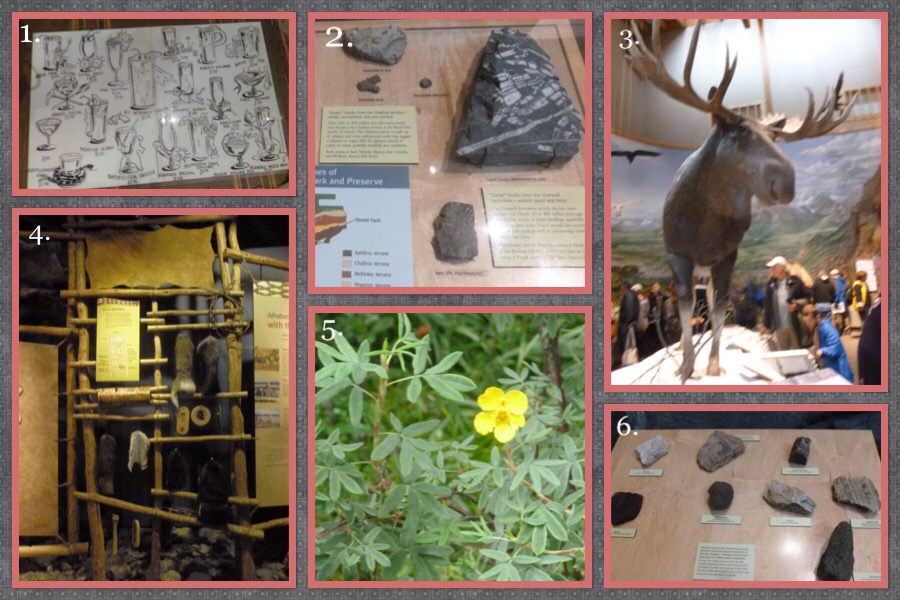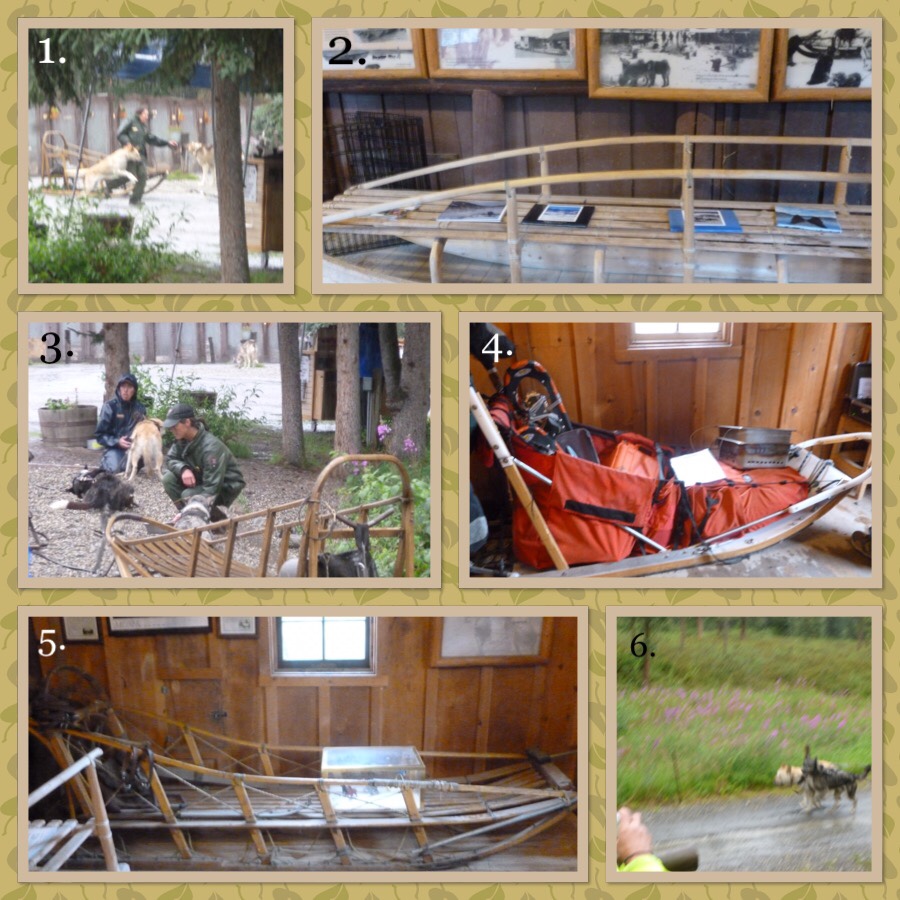On Saturday, July 18, we were up and on our feet just about all day long. (Or at least it felt like it)
On a trail that we had hoped to take to the visitors’ center, we had our first real Big Animal Encounter. Fortunately, no blood was involved. We came around a curve – and saw a moose! It was very big, and had two young calves. As it was practically in the trail, there was definitely no question of continuing in that direction. Dad took some pictures, which I was unable to do since I had left my camera at camp. Although Dad had told me that we were going to be out all day, I had not brought my camera, but Dad allowed us to go back to camp and get it, as it was not much out of out way to go to the visitors’ center a different way. We ended up riding the shuttle bus to the center, which we did a fair deal of that day.
In the morning, we reserved tickets for the hike and bus ride we did the next day, and then explored the visitor center and saw a presentation, given by one of the rangers, about ravens, both mythically and actually. She also told some Athabaskan stories about Raven as a figure in their legends. Did you know that, while crows have a wingspan of up to three feet, and most ravens have a wingspan of about four feet, the ravens in Alaska have a wingspan of up to five feet?
The visitor center was quite interesting, and I definitely learned some stuff. They had trunk samples from both the black spruce and the white fir – at least I think these were the trees. Although the spruce was older, it had lived in a much less hospitable environment and was much smaller.
After lunch and finishing exploring the visitors’ center, we rode another bus out to the kennels, where we saw sled dogs, and even got to see them pull a sled with one of the rangers. The sled dogs do real work each winter, and even in the summer demonstrate daily. The ranger talked about the dogs, and also about different types of sled. The one that was used for the demo was a more historically styled sled, with the bed high above the runners, but had some wheels added as it was used on a gravel path. Now toboggan style sleds are used, which have the bed just a little above the runners. They are easier to steer, and can be used with more weight.
After this, as we were all cold and wet, and it had been raining all day and kept on till the next, we went to a small restaurant near the visitors’ center and each got some thing hot to eat or drink. Dad got beef stew and coffee, Gregory got hot cocoa, and I got seafood chowder. Based on my own experience and the reports of others, it was all delicious. 🙂
Now that I have made you do all that reading, you get to see the pictures. Unfortunately I did not have my camera when we saw the moose, but I have photos from the rest of the day.
- An old menu that had been laminated and put in the visitors’ center, most of which was set up as a small museum.
- Some fossils from the area. A label said that the small brown one near the bottom is of a fern, and the dark grey one with white bits, above it, a family of squid. I could see the fern impression on one, but the other does not look much like squid to me.
- This is the best I have to show you in the way of moose pictures. Aren’t they huge?
- A display showing some of the furs and natural materials that were used by the native americans in Alaska. Sorry the lighting here was not very good.
- Some Shrubby Cinquefoil that I saw on Friday
- Various rocks from Polychrome Mountain
- Dog moving! The rangers at the kennels move the dogs this way because, pound for pound, huskies are the strongest draft animals in the world – which means that if they bent over far enough, the dogs would pull their keepers over.
- An old sled
- Unharnessing the dogs
- This is a sled such as is used now, complete with equipment
- Another old sled
- This is as close as I got to a picture of the sled in motion. Bad timing, Emma!

